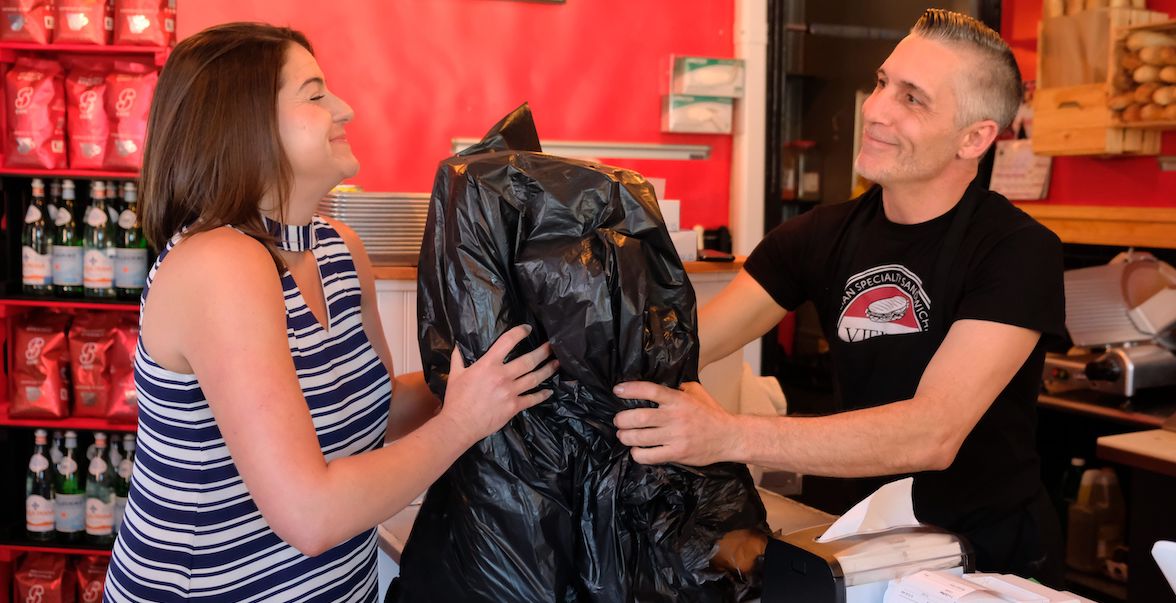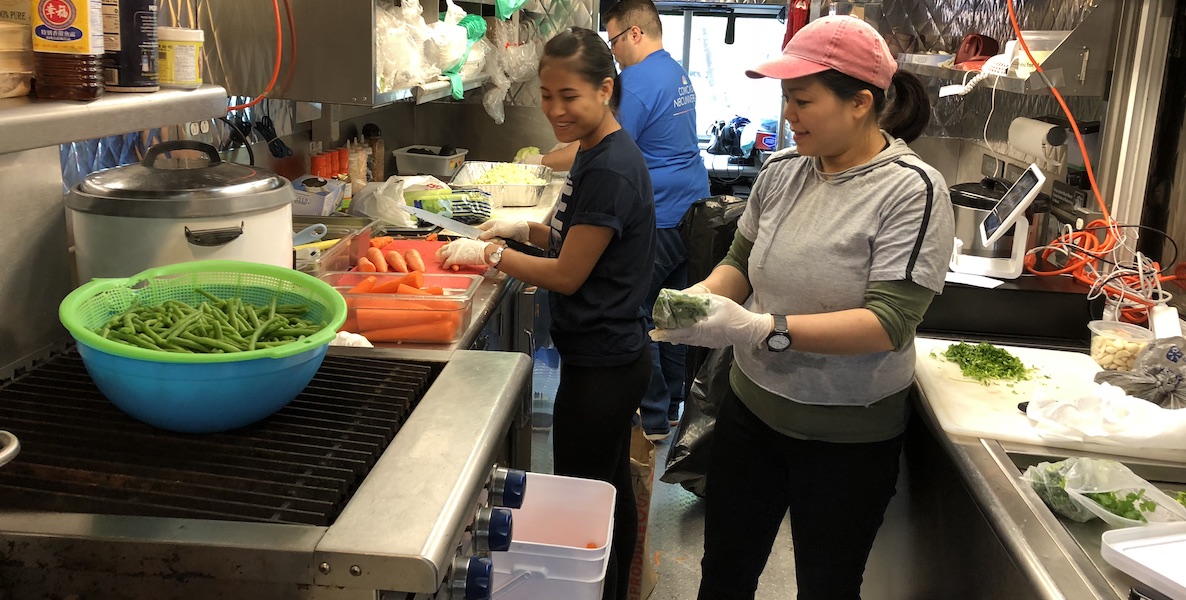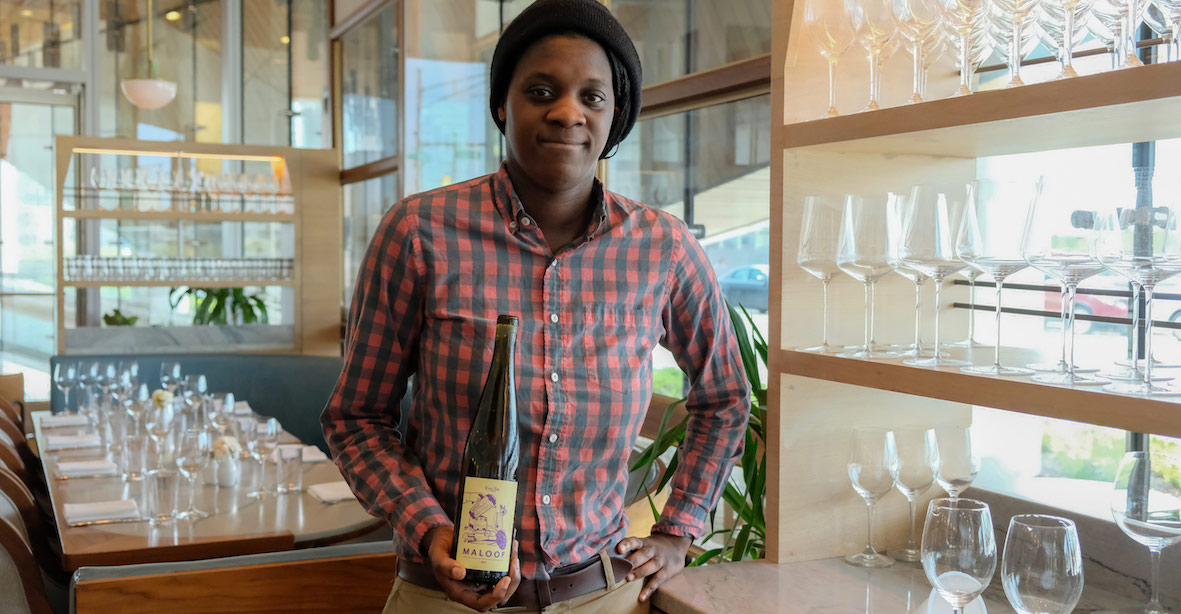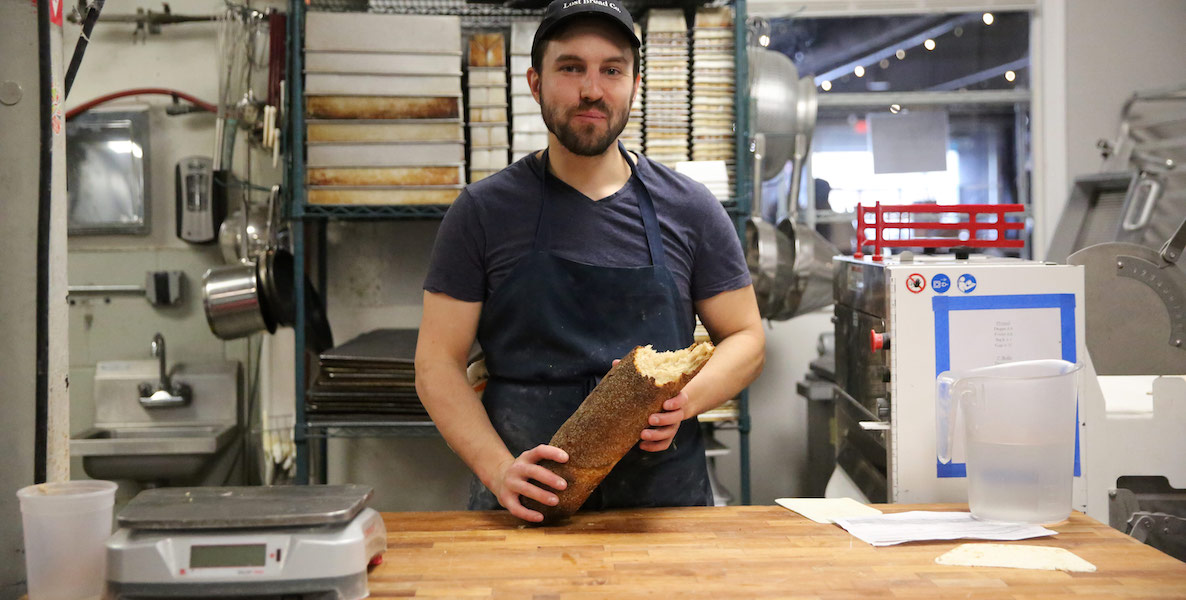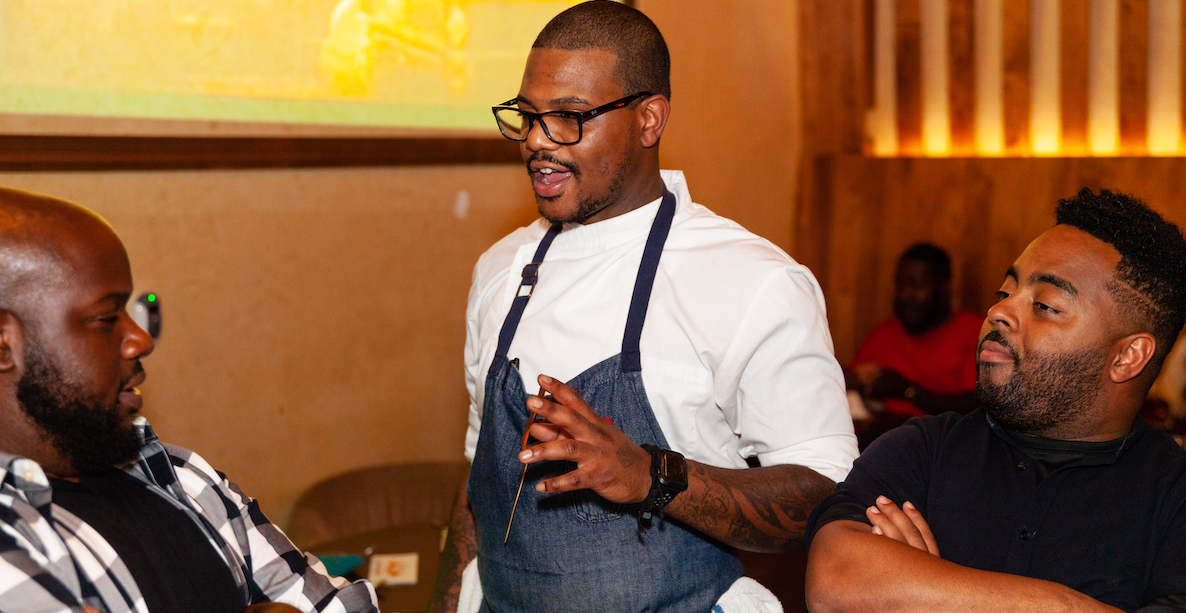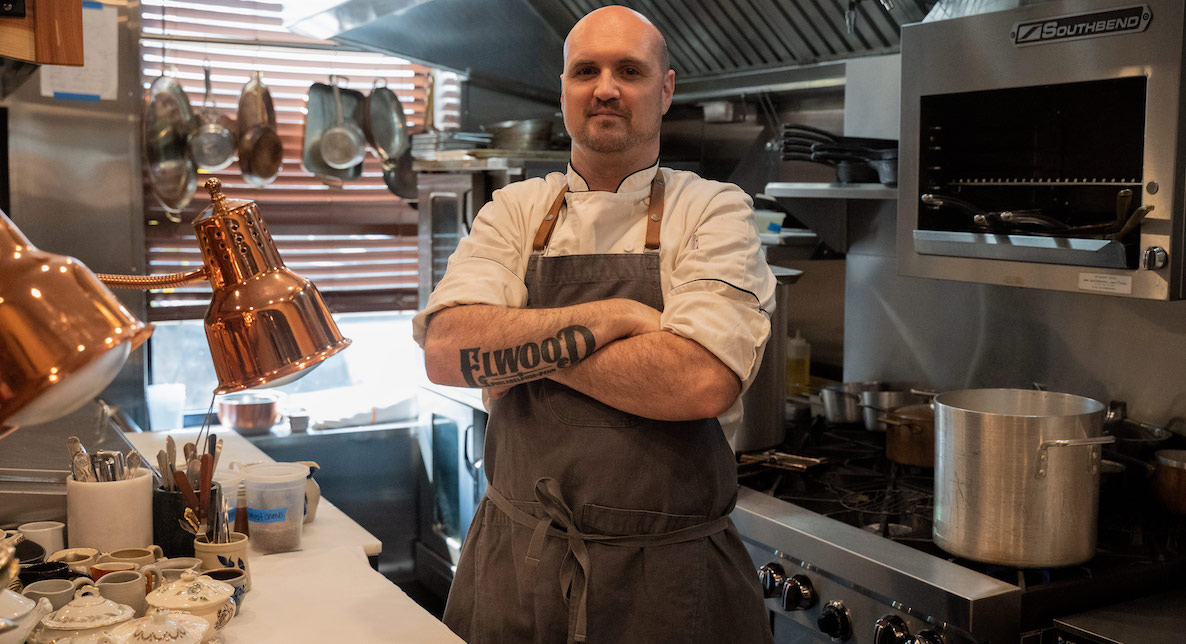Elwood, tucked under the I-95 overpass at the edge of Fishtown, has one of the strangest and most essential menus in the city: catfish and waffles, snapper soup, whole frog, and whole rabbit, all served on antique dishware that could have come from a grandma’s china cabinet. But allow me to start with the celery—whole-stalk, braised, with Hootenanny and Royer cheeses (both from Pennsylvania). In fact, let me start with the ornate turn-of-the-century celery dish that the celery is served in. Yes, chef-owner Adam Diltz tells me, at one time in history, celery was so prized that it required its own dish.
“During the Victorian era, celery was the hottest dish to eat. It was difficult to grow and so it was a status symbol.” says Diltz, who spent three years acquiring the collection of antique silverware, plates, bowls, tureens, and saucers for his restaurant. “Celery dishes were once someone’s prized possession and now no one cares about them.”
“If you go to New Orleans, everyone knows what gumbo is. But here, nobody knows what ham pot pie or turtle soup is,” Diltz says. “The main question I’m asking is: What if Philadelphia, as a region, hadn’t lost its original food culture?”
Who among us can even imagine a time when celery was the avocado toast (or sushi or caviar) of its day? “That’s why I do that dish,” he says. “Plus, I love celery and no one else does.” If this last bit is true, that could change after eating Diltz’s version channeling the 19th century, which just might make everyone fall deeply in love with celery.
It’s that mix of deep food-history geekery and brash confidence that makes Elwood one of the most exciting and important new restaurants to come along in this city in quite some time. Elwood has been described in local food media as serving “Pennsylvania food” or as being “dedicated to Pennsylvania culinary history,” but that makes it sound way more boring than it really is.
“It’s really hard to explain my restaurant,” Diltz says. “Most articles say it’s a Pennsylvania Dutch place. But it’s not. It’s not just that. Or else they think I’m something like City Tavern,” he says, referring to the colonial-themed mainstay in Old City. “Sometimes I call it Pennsylvania Gothic, but my wife doesn’t like that.”
Yes, there are Pennsylvania Dutch touches, such as ham pot pie, funnel cake, and venison scrapple—though that’s dabbed with harissa ketchup and served spiked on an antler. But the menu’s real energy comes from unearthing and reinventing the kind of food that Philadelphia was famous for when it was one of the most important cities in the world. We too often forget that around here. In the early 19th century, Philadelphia was the second-largest English-speaking city in the world, and it had a unique food scene, with a fusion of foreign and local influences, worthy of a global power.
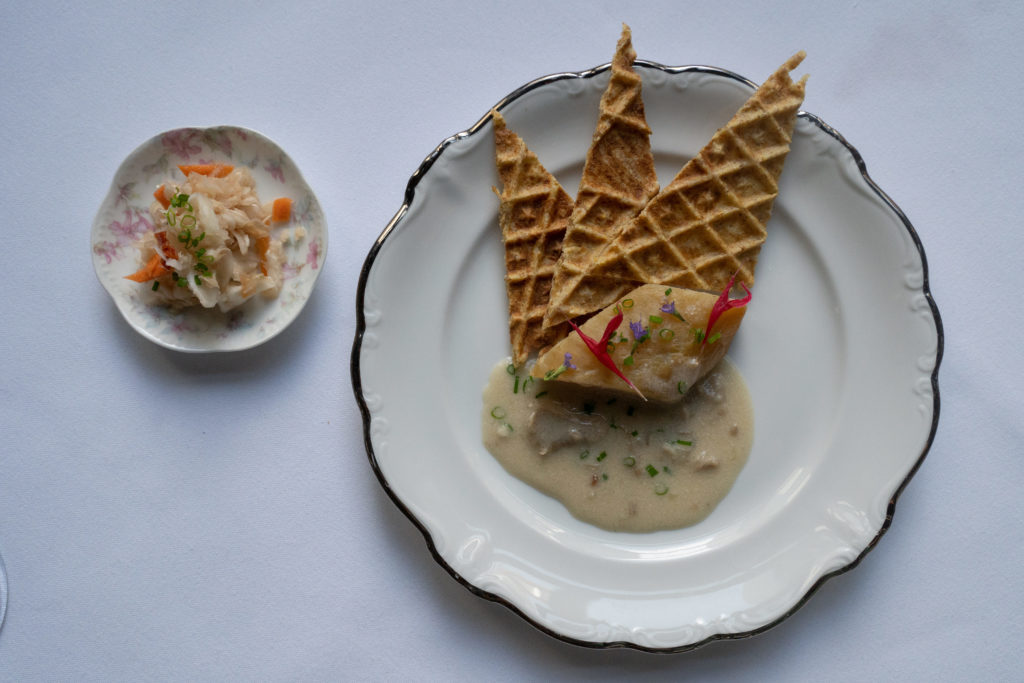
“If you go to New Orleans, everyone knows what gumbo is. But here, nobody knows what ham pot pie or turtle soup is,” Diltz says. “The main question I’m asking is: What if Philadelphia, as a region, hadn’t lost its original food culture?”
Take catfish and waffles. These days, diners likely know chicken and waffles, and they mistakenly know it as a “traditional Southern dish” on gastropub menus. But chicken and waffles isn’t Southern at all. That dish is Pennsylvania Dutch, and it’s actually a take on what was 19th century Philadelphia’s most popular food in which catfish predated chicken. As Hidden Philadelphia reminds us, “The word Wissahickon is, after all, derived from the Lenape words Wissha mechan, meaning ‘catfish creek.’”
“There were inns, run by Germans, serving catfish waffles, all up and down the Schuylkill,” Diltz says. People from Center City made weekend day trips along the river to eat this local delicacy—at least until the early 20th century, when too much pollution in the local waterways killed off the fish and the waffle taverns disappeared.
While historically, the catfish was pan fried, Diltz brines and smokes his catfish, and serves it with paper-thin waffles (similar to what might have been served at Kugler’s a famed 19th century Philadelphia restaurant) along with pepper hash, which he calls “the sriracha of its day.”
Likewise, he cooks his frogs fricassee style, rolling them in cattail pollen, as an homage to bullfrog fricassee, a delicacy of late 18th century Philadelphia. He serves pork cooked three ways, family style, with an array of old-fashioned sides like mashed potatoes, apple butter, pickled apples, sauerkraut, and rhubarb sauce. The Simpson lettuce is served with pickled quail eggs. Everything is sourced from within 100 miles.
“Food is related to everything in history, and some of that is, frankly, uncomfortable to talk about,” Diltz says. “But I want to talk about it.”
Then, there is the Kensington Snapper Soup. Perhaps no other dish exemplifies old Philadelphia as soup made from snapping turtle, a classic made famous by the historic Bookbinder’s restaurant. As Colonel John W. Forney wrote in a book entitled The Epicure in 1879, “Terrapin is essentially a Philadelphia dish. Baltimore delights in it, Washington eats it, New York knows it; but in Philadelphia it approaches a crime not to be passionately fond of it.” Travelers throughout the 18th and 19th centuries wrote astonished accounts of huge turtles for sale in the city’s markets.
Diltz sources whole 15-pound turtles from New Jersey and Delaware. “It’s just like making chicken soup,” he says. “You put them in a pot and simmer it until it’s tender.” Snapper soup is traditionally served with sherry drizzled on it, and Diltz nods to this by serving Madeira spiked with peppers on the side (Madeira is likely more historically accurate since it was more available than sherry, whose trade was controlled by England).
The tricky aspect of snapper soup, both culinary and historical, is the spices. “The defining characteristic of snapper soup comes from its spices, which arrived here along with the influx of Haitian refugees in the 1790s after Haiti’s slave revolt,” Diltz says. Again, it might be difficult to imagine early Philadelphia as a place teeming with international influences, but it was. “Caribbean immigrants sold snapper soup on the streets of Philly,” Diltz says.
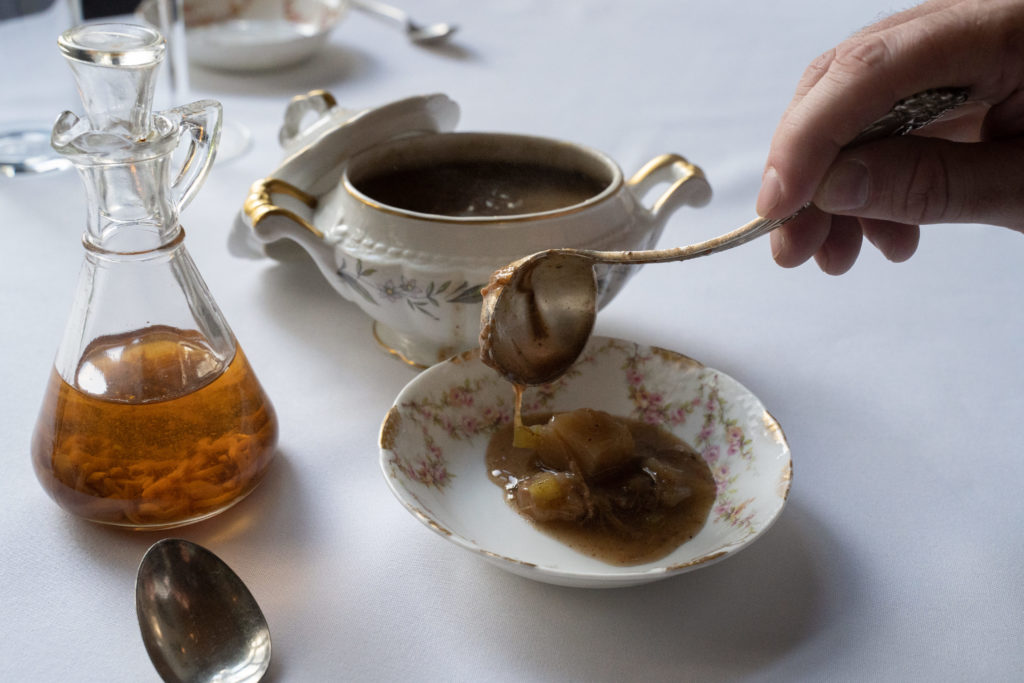
Though Philadelphia cuisine in the 19th and early 20th century was driven by white diners at places like Bookbinder’s, Diltz stresses that these dishes owe their popularity to non-white influences. “You cannot have a restaurant serving Pennsylvania cuisine without mentioning Native Americans, the Caribbean influence, or slaves,” he says.
He’s also sensitive to the idea that opening a restaurant based on “Pennsylvania food” has inherent dangers in the current political climate. “I was a little afraid that Trump supporters with MAGA hats would come in here and say, ‘Oh yeah, let’s go back to the old days,’” he says. That, fortunately, has not happened at all.
“Food is related to everything in history, and some of that is, frankly, uncomfortable to talk about,” Diltz says. “But I want to talk about it.” It’s this sort of frankness, along with inspired and meticulous cooking, that makes Elwood a dynamic and delicious place to eat.
The menu’s energy comes from reinventing the kind of food Philadelphia was famous for in the early 19th century, when it was the second-largest English-speaking city in the world, and it had a unique food scene, with a fusion of foreign and local influences, worthy of a global power.
Originally from northeastern Pennsylvania, not far from Scranton, Diltz did not grow up in the kind of family that ate at Bookbinder’s. “I lived in a trailer, with a single mother, on food stamps,” he says. Elwood is named after his of his grandfather—“a Methodist who didn’t drink, smoke, or swear”—who took him into the woods, and taught him how to hunt animals like rabbit.
“I’ve been thinking about this restaurant for at least 15 years,” he says. “I’m not Italian. I didn’t need to open another Italian restaurant. Pasta is not comfort food for me,” he says. He’s studied the work of pioneering food historian William Woys Weaver and has even enrolled in Weaver’s class at Drexel University. “I read Weaver’s Pennsylvania Dutch Country Cooking when I was still in high school,” he says.
Diltz has been cooking in Philadelphia for many years, honing his craft at places Farmacia and Johnny Brenda’s, all the while imagining and theorizing what Elwood might be. It took him nearly three years from when the BYO was first announced until it opened its doors in May. The 26-seat dining room, beautifully designed by architect Jenny Ko (Diltz’s wife) at the edge of Fishtown’s nightlife hub, is a little oasis in the neighborhood, with 19th century paintings and prints, white tablecloths, and what Diltz calls “old-school hospitality.”
Amid so much sameness and so many derivative concepts in the restaurant scene, Elwood feels fresh, smart, and—even though the dishes may be centuries old—very much of the moment. It’s the rare restaurant that makes you think.
Jason Wilson is The Citizen’s 2019 Jeremy Nowak Fellow, funded by Spring Point Partners, in honor of our late chairman Jeremy Nowak. He is the author of three books, including most recently Godforsaken Grapes, series editor of The Best American Travel Writing, and writes for the Washington Post, New York Times, New Yorker and many other publications.
Adam Diltz, chef-owner at Elwood. Photo by Anthony Pezzotti


